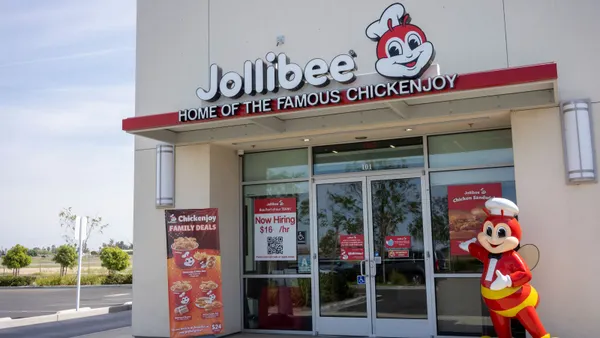Dive Brief:
- McDonald’s is now limiting allocation of its meat supply as of Wednesday as the U.S. faces potential shortages due to slaughterhouse closures. Business Insider reports that the company will send its restaurants meat shipments based on calculated demand across the system, versus the standard amount believed will be needed.
- The nearly 14,000-unit domestic system can meet demand at this time and hasn't experienced shortages yet, though McDonald's suppliers Smithfield Foods and Tyson have both recently warned of potential shortages. This decision was made out of an abundance of caution, McDonald's told Business Insider.
- In an interview with CNBC, CEO Chris Kempczinski said that the state of the American meat processing industry is "concerning" and that McDonald's is "monitoring it, literally, hour by hour," Business Insider reports.
Dive Insight:
Supply chain concerns have been cropping up on recent restaurant earnings calls, and for good reason. Earlier this week, Tyson Foods’ chairman John Tyson penned a full-page ad in a handful of publications warning that “the food supply chain is breaking” due to widespread facility closures due to novel coronavirus. Tyson Foods is the largest meat producers in the U.S.
Food and agricultural experts have also warned of a meat shortage that will likely affect grocery stores.
With a system as large as McDonald’s, any supply disruption could hurt. And although Kempczinski said the company has not suffered any supply chain breaks globally, he does acknowledge the concerning environment. This concern isn’t confined to the U.S., either. The McDonald’s Canada system has started sourcing beef from other countries due to supply chain issues.
However, the U.S. approach could have a different result, since it’s calculating demand across the system. This could affect operators with higher meat sales, particularly as businesses reopen. Further complicating things, there is a big question mark hanging over what that “reopen” means. As of now, businesses will pick up at very different paces state-by-state, as the lockdowns are lifting at disparate times. Coming up with a supply chain forecast in that type of environment is a challenge on its own without a potential shortage.
But no doubt companies with the size and scale of McDonald’s and its peers will be better protected if there is a shortage. They have more capital power than smaller chains and independents and will likely win the fight over a pressured supply chain, as John Davie, CEO of Dining Alliance, told Forbes.
Kempczinski acknowledged this on McDonald’s earnings call Thursday, stating: "The size and scale of our supply chain has also proven to be a significant advantage during this crisis."
Yum CEO David Gibbs also acknowledged his company’s insulation from these potential issues, telling Yahoo Finance, “We have not seen any disruption. And we have some good sight into the short-term supply and that seems stable.”
McDonald’s executives predict that it will take months to get back to pre-COVID-19 meat supply levels. But customers are expected to crawl, not run, back to restaurants, so that may buy some time to correct any potential disruptions. According to a survey from Civic Science, more than 60% of respondents plan to wait more than one month to visit a restaurant dining room after lockdowns are lifted, while 20% of respondents plan to wait six months or more before returning to a restaurant dining room.










